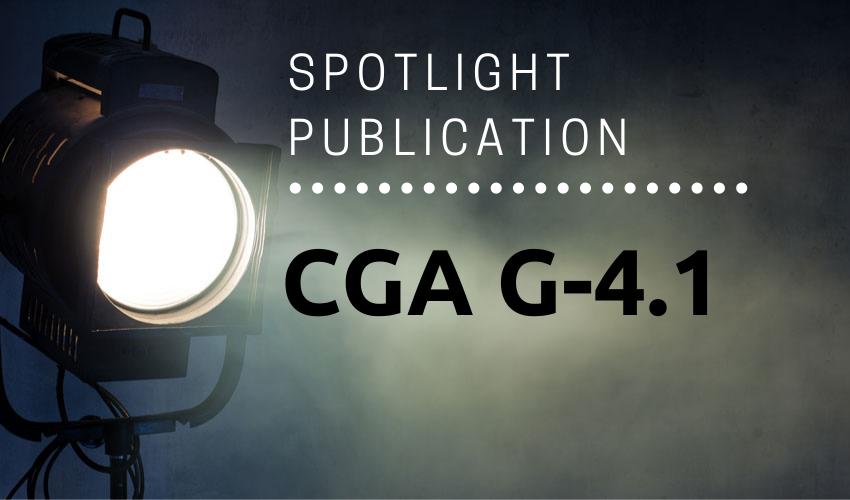Revised Edition: CGA G-4.1, Cleaning of Equipment for Oxygen Service
Article published: January 4, 2019
Updated: July 1, 2020
Overview
The Compressed Gas Association (CGA) published our 7th edition of CGA G-4.1, Cleaning of Equipment for Oxygen Service in August 2018.
CGA G-4.1 is an internationally harmonized publication, and is referenced by the National Fire Protection Association (NFPA).
It describes the cleaning methods and requirements for equipment used in the production, storage, distribution, and use of liquid and gaseous oxygen to reduce the risk of fire, explosion, or promotion of combustion.
Cleaning in accordance with this publication is required for all surfaces in contact with a gas or liquid that has an oxygen concentration greater than 23.5%, including stationary storage tanks, road tankers, and rail cars; pressure vessels such as heat exchangers and distillation columns; compressors and pumps; and associated piping, valves, and instrumentation.
However, the cleaning methods and requirements are not limited to this equipment.
With modifications, these methods may be used for cleaning other oxygen and oxidizer (e.g., fluorine, nitrogen trifluoride, nitrous oxide) service equipment such as cylinders, cylinder valves, cylinder regulators, welding torches, and pipelines where regulatory requirements do not specify cleaning methods.
Among other topics relevant to oxygen cleaning, this publication addresses the following:
- planning requirements;
- precleaning;
- cleaning including mechanical cleaning, aqueous cleaning, solvent cleaning, and semi-aqueous/emulsion cleaning;
- rinsing and drying;
- inspection methods;
- contamination levels including acceptable contamination levels and contamination detection thresholds for nonvolatile contaminants;
- packaging and maintaining cleanliness;
- labeling;
- quality assurance, quality control measures;
- personnel safety; and
- training.
This edition also contains examples of cleaning procedures for carbon steel piping, valves, instrumentation, and piping components, tubular heat exchangers, shop fabricated carbon steel vessels, shop fabricated cryogenic tanks, and field fabricated bulk storage tanks.
What’s New in the 7th Edition
The content in Edition 7 of CGA G-4.1 was significantly reorganized to improve readability.
Other changes in this edition include: better descriptions of cleaning methods, new sections on quality control and record keeping, and examples of cleaning procedures for various component and equipment types, to aid in the creation of new cleaning procedures.


